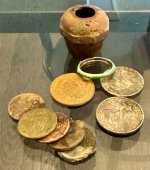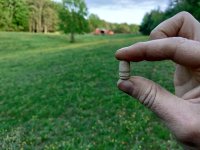PurpleGold
Full Member
- Apr 17, 2015
- 210
- 360
- Detector(s) used
- 30" Sniper Bazooka Gold Trap, X-Stream Hybrid Pro hand dredge, Royal Manufacturing 54" Powered Stream Sluice, Pans of all different sizes and shapes
- Primary Interest:
- Prospecting
Forgive my newbness please . I'm just getting into this and absolutely loving it. There a few local spots to me near Denver Colorado that have cobble stone bars. When the water level gets low they are almost completely exposed. Where do you experienced prospectors dig when the cobble stone bar is exposed? I was thinking to dig at the furthest down stream point or just after the cobble stones. Please help point me in the right direction. Thanks! You guys
. I'm just getting into this and absolutely loving it. There a few local spots to me near Denver Colorado that have cobble stone bars. When the water level gets low they are almost completely exposed. Where do you experienced prospectors dig when the cobble stone bar is exposed? I was thinking to dig at the furthest down stream point or just after the cobble stones. Please help point me in the right direction. Thanks! You guys 

Upvote
0








